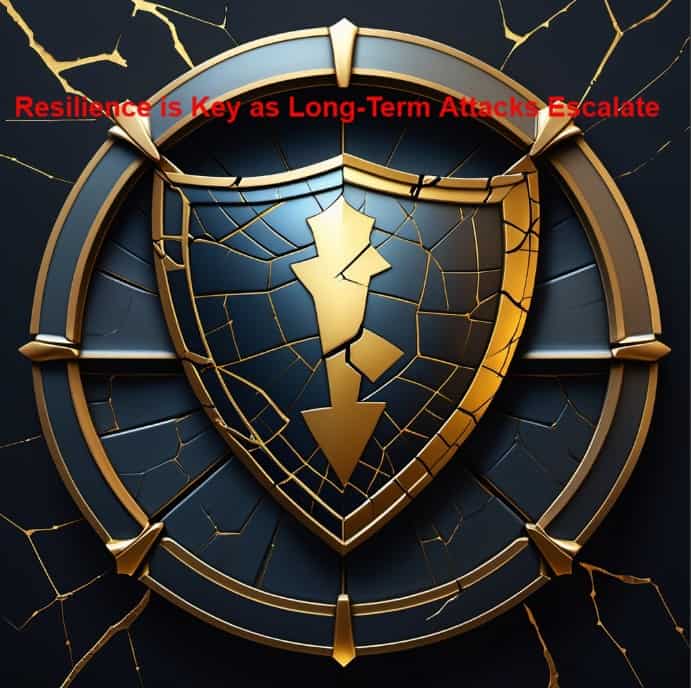The cybersecurity landscape is shifting beneath our feet. The days of solely focusing on preventing cyberattacks are waning, replaced by a stark new reality: patient, long-term attacks like those by Volt Typhoon will become more common, demanding a focus on resilience over prevention. This isn’t a call to abandon preventative measures entirely, but rather an urgent plea to acknowledge that breaches are inevitable and to build systems capable of withstanding and recovering from them.
The Volt Typhoon attack, first uncovered in May 2023, serves as a chilling example of this evolving threat. This state-sponsored Chinese hacking group didn’t just aim for a quick data grab. Instead, they stealthily embedded themselves within US critical infrastructure, including communications, manufacturing, and transportation systems, laying the groundwork for potential disruptions in the event of future conflict. The FBI Director, Christopher Wray, warned that Volt Typhoon’s actions represent a “pre-positioning” effort designed to “wreak havoc and cause real-world harm to American citizens and communities.” What’s particularly concerning is that Volt Typhoon is believed to have been lurking within these networks for as long as five years, highlighting the insidious nature of these advanced persistent threats (APTs).
This shift towards long-term strategic attacks is reflected in recent statistics. According to the 2023 Verizon Data Breach Investigations Report, the median “dwell time” – the time between an attacker’s initial intrusion and their detection – remains stubbornly high. While the report did not have a median figure, it was noted that there had been an increase in the number of breaches with dwell times exceeding a year, driven primarily by ransomware actors, however, this points to the issue of discovery of intrusion being difficult. This gives attackers ample time to explore networks, escalate privileges, and establish persistent backdoors, making eradication significantly more difficult. Furthermore, IBM’s Cost of a Data Breach Report 2023 found that the average cost of a data breach reached an all-time high of $4.45 million, highlighting the devastating financial impact of these prolonged attacks.
Beyond Volt Typhoon, other incidents underscore the growing threat of persistent attacks. The 2020 SolarWinds attack, attributed to Russian actors, saw malicious code inserted into a widely used software update, affecting thousands of organizations worldwide. It took months to detect the breach, and its full impact is still being assessed. More recently, the MOVEit Transfer hack in June 2023, by the ransomware group CLoP, highlighted the vulnerabilities of even secure file transfer software, emphasizing the difficulty of guaranteeing security at any single point in an organization’s network.
The Path Forward: Building a Culture of Resilience
The rise of these sophisticated, long-term attacks demands a fundamental shift in cybersecurity strategy. We must move beyond a purely preventative mindset and embrace a proactive, resilience-focused approach. This entails:
- Assuming Breach: Operating under the assumption that a breach will eventually occur. This shift in mindset allows organizations to prioritize threat detection, incident response, and recovery planning.
- Implementing Zero Trust Architectures: Adopting a “never trust, always verify” security model that limits lateral movement within networks and minimizes the impact of a breach.
- Investing in Advanced Threat Detection: Employing sophisticated tools and techniques, such as behavior analytics and machine learning, to identify anomalous activity that may indicate a persistent threat.
- Regular Penetration Testing and Red Teaming: Conducting regular security assessments to identify vulnerabilities and test the effectiveness of incident response plans.
- Robust Backup and Recovery Systems: Ensuring that critical data is regularly backed up and that recovery procedures are in place to minimize downtime in the event of an attack.
- Cybersecurity Awareness Training: Educating employees about the latest threats and best practices to minimize the risk of human error, a common entry point for attackers.
- Threat Intelligence Sharing: Collaborating with industry peers and government agencies to share information about emerging threats and vulnerabilities.
- Incident Response Planning: Create comprehensive plans that detail specific steps to be taken in the event of a cyberattack, including communication protocols, roles and responsibilities, and recovery procedures. These plans should be regularly tested and updated.
The time for complacency is over. Organizations, regardless of size or industry, must prioritize cybersecurity resilience. We urge business leaders, IT professionals, and policymakers to invest in the necessary resources, training, and technologies to build a robust defense against the growing threat of long-term attacks. Engage with cybersecurity experts, conduct thorough risk assessments, and develop comprehensive incident response plans. Share threat intelligence with your industry peers, and advocate for stronger cybersecurity regulations and standards.
Let’s work together to create a more secure and resilient digital future.
Contact CMIT Solutions (732) 400-8577 OR visit: https://cmitsolutions.com/piscataway-nj-1178/


